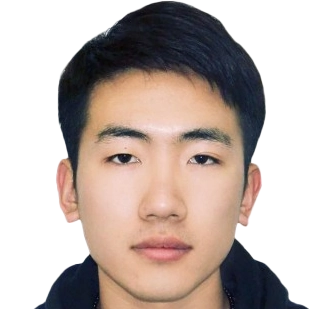Research Group Peter Schüffler
Peter Schüffler
is Professor for Computational Pathology at TU Munich.
His field of research is the area of digital and computational pathology. This includes novel machine learning approaches for the detection, segmentation and grading of cancer in pathology images, prediction of prognostic markers and outcome prediction (e.g. treatment response). Further, he investigates the efficient visualization of high-resolution digital pathology images, automated QA, new ergonomics for pathologists, and holistic integration of digital systems for clinics, research and education.
Team members @MCML
PostDocs
PhD Students
Recent News @MCML
Publications @MCML
2025
An equivalency and efficiency study for one year digital pathology for clinical routine diagnostics in an accredited tertiary academic center.
Virchows Archiv (Feb. 2025). DOI
Abstract
Digital pathology is revolutionizing clinical diagnostics by offering enhanced efficiency, accuracy, and accessibility of pathological examinations. This study explores the implementation and validation of digital pathology in a large tertiary academic center, focusing on its gradual integration and transition into routine clinical diagnostics. In a comprehensive validation process over a 6-month period, we compared sign-out of digital and physical glass slides of a wide range of different tissue specimens and histopathological diagnoses. Key metrics such as diagnostic concordance and user satisfaction were assessed by involving the pathologists in a validation training and study phase. We measured turnaround times before and after transitioning to digital pathology to assess the impact on overall efficiency. Our results demonstrate a 99% concordance between the analog and digital reports while at the same time reducing the time to sign out a case by almost a minute, suggesting potential long-term efficiency gains. Our digital transition positively impacted our pathology workflow: Pathologists reported increased flexibility and satisfaction due to the ease of accessing and sharing digital slides. However, challenges were identified, including technical issues related to image quality and system integration. Lessons learned from this study emphasize the importance of robust training programs, adequate IT support, and ongoing evaluation to ensure successful integration. This validation study confirms that digital pathology is a viable and beneficial tool for accurate clinical routine diagnostics in large academic centers, offering insights for other institutions considering similar endeavors.
MCML Authors
2024
Unlocking the Potential of Digital Pathology: Novel Baselines for Compression.
Preprint (Dec. 2024). arXiv
Abstract
Digital pathology offers a groundbreaking opportunity to transform clinical practice in histopathological image analysis, yet faces a significant hurdle: the substantial file sizes of pathological Whole Slide Images (WSI). While current digital pathology solutions rely on lossy JPEG compression to address this issue, lossy compression can introduce color and texture disparities, potentially impacting clinical decision-making. While prior research addresses perceptual image quality and downstream performance independently of each other, we jointly evaluate compression schemes for perceptual and downstream task quality on four different datasets. In addition, we collect an initially uncompressed dataset for an unbiased perceptual evaluation of compression schemes. Our results show that deep learning models fine-tuned for perceptual quality outperform conventional compression schemes like JPEG-XL or WebP for further compression of WSI. However, they exhibit a significant bias towards the compression artifacts present in the training data and struggle to generalize across various compression schemes. We introduce a novel evaluation metric based on feature similarity between original files and compressed files that aligns very well with the actual downstream performance on the compressed WSI. Our metric allows for a general and standardized evaluation of lossy compression schemes and mitigates the requirement to independently assess different downstream tasks. Our study provides novel insights for the assessment of lossy compression schemes for WSI and encourages a unified evaluation of lossy compression schemes to accelerate the clinical uptake of digital pathology.
MCML Authors
Learned Image Compression for HE-Stained Histopathological Images via Stain Deconvolution.
MOVI @MICCAI 2024 - 2nd International Workshop on Medical Optical Imaging and Virtual Microscopy Image Analysis at the 27th International Conference on Medical Image Computing and Computer Assisted Intervention (MICCAI 2024). Marrakesh, Morocco, Oct 06-10, 2024. DOI GitHub
Abstract
Processing histopathological Whole Slide Images (WSI) leads to massive storage requirements for clinics worldwide. Even after lossy image compression during image acquisition, additional lossy compression is frequently possible without substantially affecting the performance of deep learning-based (DL) downstream tasks. In this paper, we show that the commonly used JPEG algorithm is not best suited for further compression and we propose Stain Quantized Latent Compression (SQLC), a novel DL based histopathology data compression approach. SQLC compresses staining and RGB channels before passing it through a compression autoencoder (CAE) in order to obtain quantized latent representations for maximizing the compression. We show that our approach yields superior performance in a classification downstream task, compared to traditional approaches like JPEG, while image quality metrics like the Multi-Scale Structural Similarity Index (MS-SSIM) is largely preserved.
MCML Authors
A systematic review of machine learning-based tumor-infiltrating lymphocytes analysis in colorectal cancer: Overview of techniques, performance metrics, and clinical outcomes.
Computers in Biology and Medicine 173 (May. 2024). DOI
Abstract
The incidence of colorectal cancer (CRC), one of the deadliest cancers around the world, is increasing. Tissue microenvironment (TME) features such as tumor-infiltrating lymphocytes (TILs) can have a crucial impact on diagnosis or decision-making for treating patients with CRC. While clinical studies showed that TILs improve the host immune response, leading to a better prognosis, inter-observer agreement for quantifying TILs is not perfect. Incorporating machine learning (ML) based applications in clinical routine may promote diagnosis reliability. Recently, ML has shown potential for making progress in routine clinical procedures. We aim to systematically review the TILs analysis based on ML in CRC histological images. Deep learning (DL) and non-DL techniques can aid pathologists in identifying TILs, and automated TILs are associated with patient outcomes. However, a large multi-institutional CRC dataset with a diverse and multi-ethnic population is necessary to generalize ML methods.
MCML Authors
Künstliche Intelligenz in der Pathologie – wie, wo und warum?
Die Pathologie (Mar. 2024). DOI
Abstract
Künstliche Intelligenz verspricht viele Erneuerungen und Erleichterungen in der Pathologie, wirft jedoch ebenso viele Fragen und Ungewissheiten auf. In diesem Artikel geben wir eine kurze Übersicht über den aktuellen Stand, die bereits erreichten Ziele vorhandener Algorithmen und immer noch ausstehende Herausforderungen.
MCML Authors
©all images: LMU | TUM






